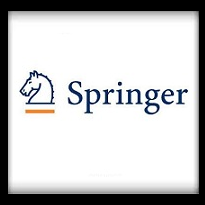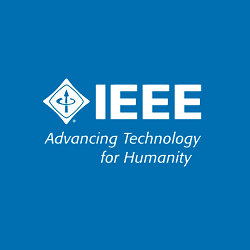دانلود ترجمه مقاله تلفیق شبکه عصبی و الگوریتم ژنتیک در عکسبرداری آب گرفتگی با وضوح بالا – مجله الزویر
| عنوان فارسی مقاله: | کاربرد تلفیق شبکه عصبی با شبکه پس انتشار خطا و الگوریتم ژنتیک در نقشه برداری از آب گرفتگی تالاب با تصاویر سنجش از راه دور و وضوح بالا |
| عنوان انگلیسی مقاله: | Super-resolution mapping of wetland inundation from remote sensingimagery based on integration of back-propagation neural network andgenetic algorithm |
| دانلود مقاله انگلیسی: | برای دانلود رایگان مقاله انگلیسی با فرمت pdf اینجا کلیک نمائید |
| سال انتشار | ۲۰۱۵ |
| تعداد صفحات مقاله انگلیسی | ۱۳ صفحه |
| تعداد صفحات ترجمه مقاله | ۲۹ صفحه |
| مجله | سنجش از راه دور محیط زیست |
| دانشگاه | دانشکده سنجش از دور و اطلاعات مهندسی دانشگاه ووهان کشور چین |
| کلمات کلیدی | طغیان رود تالاب، نقشه برداری فوق العاده با وضوح، الگوریتم یکپارچه سازی هوشمند ، تصاویر سنجش از دور |
| نشریه | Elsevier |
فهرست مطالب:
چکیده
۱ مقدمه
۲ روشها
۲ ۱ مفهوم SMWI
۲ ۲ روش SAM-SWMI
۲ ۳ روش BP-SMWI
۲ ۴ روش IBPGA-SMWI
۲ ۴ ۱ اصول پایه GA
۲ ۴ ۲ الگوریتم IBPGA-SMWI
۳ مطالب مطالعه موردی
۴ نتایج و بحثها
۴ ۱ تحلیل مقایسهای از چهار روش SMWI
۴ ۲ تحلیل حساسیت IBPGA-SMWI
۴ ۳ بحث بر موقعیت جهان واقعی
۵ نتیجه
بخشی از ترجمه:
۳ بحث بر موقعیت جهان واقعی
آب گیرهایتالاب دارای توزیع زمانی-مکانی هستند. به منظور بکاربردن و ارزیابی IBPGA-SMWI در موقعیت جهان واقعی، دو تصویر سنجش از راه دور چند طیفی با رزولوشنهای متفاوت در یک زمان در یک ناحیه مورد مطالعه نیاز هستند. یک تصویر با رزولوشن پایین از بخشی از تصویر آبگیر میتواند بدست آید. دیگر تصویر ، تصویر با رزولوشن بالا از تصویر اصلی آبگیر میتواند بدست آید. اگر چه بسیاری از ماهوارههای سنجش از راه دور در ناحیه کلیدی پرواز میکنند، این هنوز داشتن دادههای تصویری معتبری از دو سیستم ماهوارهای متفاوت در زمان به اندازه کافی نزدیک در ناحیه مطالعه خاص کارمشکلی است. بااین حال، اگر دادههای عکس از دو سیستم ماهوارهای هستند، باید هیچ مانع فنی برای بکار بردن متدلوژی برای این دادههای تصویر وجود نداشته باشد. رویه فرآیند ممکن است از لحاظ کمی برای تطبیق با این دادهها تنظیمشوند. تصویر چند طیفی TEM+ لندست ۳۰m را و تصویر چند طیفی IKONOS 4m را برای مثال درنظربگیرید. ابتدا، یک ثبت هندسی برروی تصویر IKONOS برای پیادهسازی نیاز است، لذا هر پیکسل تصحیح شده تصویر IKONOS خروجی دارای مختصاتی مانند تصویر ETM+است. دوم، رزولوشن تصویر ETM6 برای نمونهگیری دوباره به ۲۸m نیاز دارد، که هفت برابر رزولوشن تصویر IKONOS است. سوم، بخشی از تصویر آب گیری رزولوشن ۲۸m میتواند از تصویر ETM+ ۲۸m بااستفاده از روش تحلیل ترکیب طیفی خطی مربعی حداقل، یا نرم افزار پردازش تصویر سنجش از راه دور ENVI مشتق شود. چهارم، IBPGA-SMWI میتواند برای بدست آوردن نتایج SMWI ۴m از بخشی از تصویر ۲۸m اعمال شوند. پنجم، روش طبقهبندی تصویر نظارت شده، مانند شبکههای عصبی، میتواند برای طبقهبندی تصویر IKONOS به درون تصویر اصلی آب گیر با دو کلاس نشاندهنده آب گیری و غیر آبگیر به ترتیب استفاده شوند. سرانجام، نتایج SMWI میتوانند بااستفاده از مقایسه بصری و کمی با تصویر اصلی آب گیر ارزیابیشوند.
IBPGA-SMWI به احتمال زیاد دارای دقت کمتر است، اگر رزولوشن ریز ودرشت تصویر از سیستم ماهوارهای متفاوت بیاید. عناصر زیر ممکن است به طور بالقوه از دقت IBPGA-SMWI تشکیلشده باشند: a) عدم تطابق موقتی بین رزولوشن درشت تصویر و رزولوشن ریز تصویر، به طور ویژه در تالاب با شرایط هیدرولیژیکی پویا. هر آب گیر تالاب در طول شکاف زمانی ممکن است دقت را تضعیف کند، b) دقت پیادهسازی ثبت هندسی بین دو داده تصویری از ماهوارههای متفاوت ، c) هر مسئله عدم تطابق ممکن بین دو پلتفرم ماهوارهای متفاوت.
۵٫ نتیجه
در این مطالعه، با یک روش یکپارچهسازی جدید به نام IBPGA-SMWI میتوان بهبود عملکرد در نقشهبرداری از آبگیر تالاب در مقیاس پیکسل فرعی از تصویر سنجش راه دور چند طیفی را بدستآورد. الگوریتم IBPGA-SMWI توسعه یافته است، از جمله تابع تناسب و استراتژی جستجوی یکپارچه. ما نتایج IBPGA-SMWI را بااستفاده از تصویر TM/ETM+ لندست از تالاب Poyangh در چین و مک کواری در استرالیا ارزیابی میکنیم و تحلیل حساسیت IBPGA-SMWI در رابطه با SCR، BPCR و MR برای بحث بر عملکرد الگوریتم انجام شدهاست.
IBPGA-SMWI آب گیر را به طور پیوسته تر و هموارتری نسبت به دیگر سه روش SMWI در دو تالاب نگاشت میکند. در کنار مقایسههای بصری، IBPGA-SMWI به طور سازگاری نتیجه دقیقتری را در شرایط ارزیابی کمی بااستفاده از معیار OA ، Kappa، APA، و AUA بدست میآورد. هردو GA-SMWI و IBPGA-SMWI براساس GAهستند که یک الگوریتم بهینهسازی تصادفی است. در مقایسه با GA-SMWI، IBPGA-SMWI نه تنها دقت SMWI را بهبود میبخشند، بلکه سرعت همگرایی الگوریتم را نیز تسریع میکنند. IBPGA-SMWI میتواند نتایج رضایت بخشی را در هردو ناحیه کوچک و بزرگ بدست آورد. در این فرآیند SMWI، IBPGA-SMWI به دنبال محتملترین توزیع پیکسلهای فرعی در هر پیکسل مختلط هستند و نتایج SMWI را در حالت پیکسل به پیسکل صرف نظر از مجموع تعداد پیکسلهای پردازش شده بدست میآورد. بنابراین، فرضیات همراه با BP، GA که دارای پتانسیلی برای اعمال به SMWI هستند، معتبر ثابت شدهاند.
مطالعه آب گیرهای تالاب دارای اهمیت قابل توجهی برای محیط زیست است و با زندگی گیاهی و جانوری در ارتباط است. امیدواریم که نتایج این مطالعه کاربردهای تصویربرداری سنجش راه دور با رزولوشن پایین و متوسط را در نقشهبرداری آب گیرهای تالاب و نظارت بر آنها، و مزایای مطالعه محیط تالاب را افزایشدهد.
بخشی از مقاله انگلیسی:
Introduction
Wetlands are areas where water is the primary factor controlling theenvironment and associated plant and animal life (Ramsar, 2009). Theyare cradles of biological diversity, providing water and primary productivityupon which species of plants and animals depend for survival(Ramsar, 2009).Wetlands experience periodic flood inundation whichexhibits changes in spatial distribution and temporal duration (Zhao,Stein, & Chen, 2011). Spatio-temporal characteristics of inundationhave been studied using multi-spatial, multi-temporal and multispectralremote sensing imagery (Chen, Barrett, et al., 2014; Chen, Cuddy,Wang, & Merrin, 2011; Chen, Huang, Ticehurst, Merrin, & Thew, 2013;Chen, Wang, et al., 2014; Huang, Chen, & Wu, 2014b; Huang, Chen,Wu, Chen, et al., 2014; Huang, Chen, Wu, & Yu, 2012; Huang, Peng,Lang, Yeo, & McCarty, 2014; Marti-Cardona, Dolz-Ripolles, &Lopez-Martinez, 2013; Ticehurst, Chen, Karim, & Dushmanta, 2013).However, the current remote sensing systems generally do not have high temporal and spatial resolutions at the same time (Huang, Chen,&Wu, 2014a; Li, Chen, Yu, Liu, & Huang, 2015). It is worth mentioningthat the new sensor systems, specifically constellation systems such asRapidEye, are beginning to shift this paradigm. The current high temporalremote sensing imagery usually has relatively low spatial resolution(Huang, Chen, &Wu, 2014a; Li et al., 2015). The spatial resolution rangeof medium-lowresolution remote sensing imagery here is 10m–۱۰۰۰ m.The accuracy ofwetland inundation mapping from high temporal remotesensing imagery is severely compromised due to spatial resolutionconstraints. One of the most popular methods to tackle this issue issuper-resolution mapping.Super-resolution mapping, also termed as sub-pixel mapping, isdesigned to obtain more sub-pixel spatial information within mixedpixels based on the spatial dependence assumption that observationsclose together are more alike than those that are further apart (Aplin& Atkinson, 2001; Atkinson, 1997, 2005). There are many methodsdeveloped for super-resolution mapping. Atkinson (1997) proposed amethod to allocate land cover class proportions to sub-pixels based ona distance measure (proximate sub-pixels contributing more thandistant ones). Verhoeye and De Wulf (2002) explored a method in which the super-resolutionmapping concept was formulated as a linearoptimization problem to maximize spatial autocorrelation within animage. Atkinson (2005) presented an algorithm to exchange subpixelsbased on the swap which resulted in an increase in spatialcorrelation between sub-pixels. Mertens, De Baets, Verbeke, and DeWulf (2006) established a sub-pixel mapping algorithm based onspatial attraction models (SAM) to increase accuracy. As classic artificialintelligent methods, artificial neural networks (ANNs) have been appliedto super-resolution mapping and obtained relatively satisfactoryresults (Li, Ling, Du, Feng, & Zhang, 2014; Mertens, Verbeke, Westra, &De Wulf, 2004; Quang, Atkinson, & Lewis, 2011; Zhang, Wu, Zhong, &Li, 2008). Some other well-known artificial intelligent methods, suchas Markov random field (Ardila, Tolpekin, Bijker, & Stein, 2011;Kanemura, Maeda, & Ishii, 2009; Li, Du, & Ling, 2014) and particleswarm optimization (Li et al., 2015), have also proven to be useful forthe purpose. However, due to the complexity and uncertainty of remotesensing imagery (Melin, Zibordi, & Berthon, 2012; Wu, Yi, & Zhang,2009), super-resolution mapping of wetland inundation (SMWI) fromremote sensing imagery is still a difficult task and needs furtherdevelopment. Integration of artificial intelligent methods may providepotential solutions to resolve this issue.As classic artificial intelligent methods, ANNs are trained to learnthe most appropriate sub-pixel distributions within mixed pixels insuper-resolution mapping. The back-propagation (BP) algorithm is atypical and widely used algorithm to find the appropriate networkweights, but the convergence of BP is confronted with locally optimalphenomenon (Zhang et al., 2008). Therefore, it is usually difficultfor BP neural network to find the optimal sub-pixel distributions insuper-resolution mapping. Genetic algorithm (GA) is a classic artificialintelligence method based on natural selection and genetics (Faghihi,Reinschmidt, & Kang, 2014; Van Coillie, Verbeke, & De Wulf, 2007).It has already proven to be effective in solving optimization issuesencountered in many fields such as electricity industry (Ozturk & Ceylan, 2005; Suksonghong, Boonlong, & Goh, 2014; Vazhayil &Balasubramanian, 2014), chemical industry (Preechakul & Kheawhom,2009; Qian, Sun, Zhong, & Luo, 2013; Yang & Yan, 2011), transportation(Delavar, Hajiaghaei-Keshteli, & Molla-Alizadeh-Zavardehi, 2010;Mahmoudabadi & Tavakkoli-Moghaddam, 2011; Mesbah, Sarvi, &Currie, 2011), environmental science (Oyana & Dai, 2010; Shad & Shad,2012; Yang, Yang, Shen, & Li, 2006), economics (Acosta-Gonzalez &Fernandez-Rodriguez, 2014; Wiesinger, Sornette, & Satinover, 2013),and remote sensing (Song et al., 2012; Tong, Zhang, & Liu, 2010; Yang,2007). SMWI is an optimization issue in essence. Therefore, the assumptionof this study is that coupled with BP, GA has the potential to beapplied to SMWI. The results of BP could be used as prior knowledgeto be integrated into GA in the evolution process for finding optimalsolutions. Compared with the standard GA method, the integrationmethod is expected not only to improve the accuracy of SMWI, butalso to accelerate the convergence speed of the algorithm.In this study, the above assumption was tested by developing anintegration method of BP and GA for SMWI (IBPGA-SMWI) from multispectralremote sensing imagery. The main objectives are (1) to buildthe IBPGA-SMWI algorithm, including the fitness function and the integrationsearch strategy; (2) to compare the effects of IBPGA-SMWIwithSAM-SMWI, BP-SMWI and GA-SMWI using LandsatTM/ETM+imageryfromwetlands in China and Australia; and (3) to discuss the parametersensitivity of IBPGA-SMWI.
| عنوان فارسی مقاله: | نقشه برداری با رزولوشن بالا از آبگرفتگی تالاب با ادغام شبکه عصبی و الگوریتم ژنتیک |
| عنوان انگلیسی مقاله: | Super-resolution mapping of wetland inundation from remote sensingimagery based on integration of back-propagation neural network andgenetic algorithm |
خرید ترجمه فارسی مقاله با فرمت ورد



